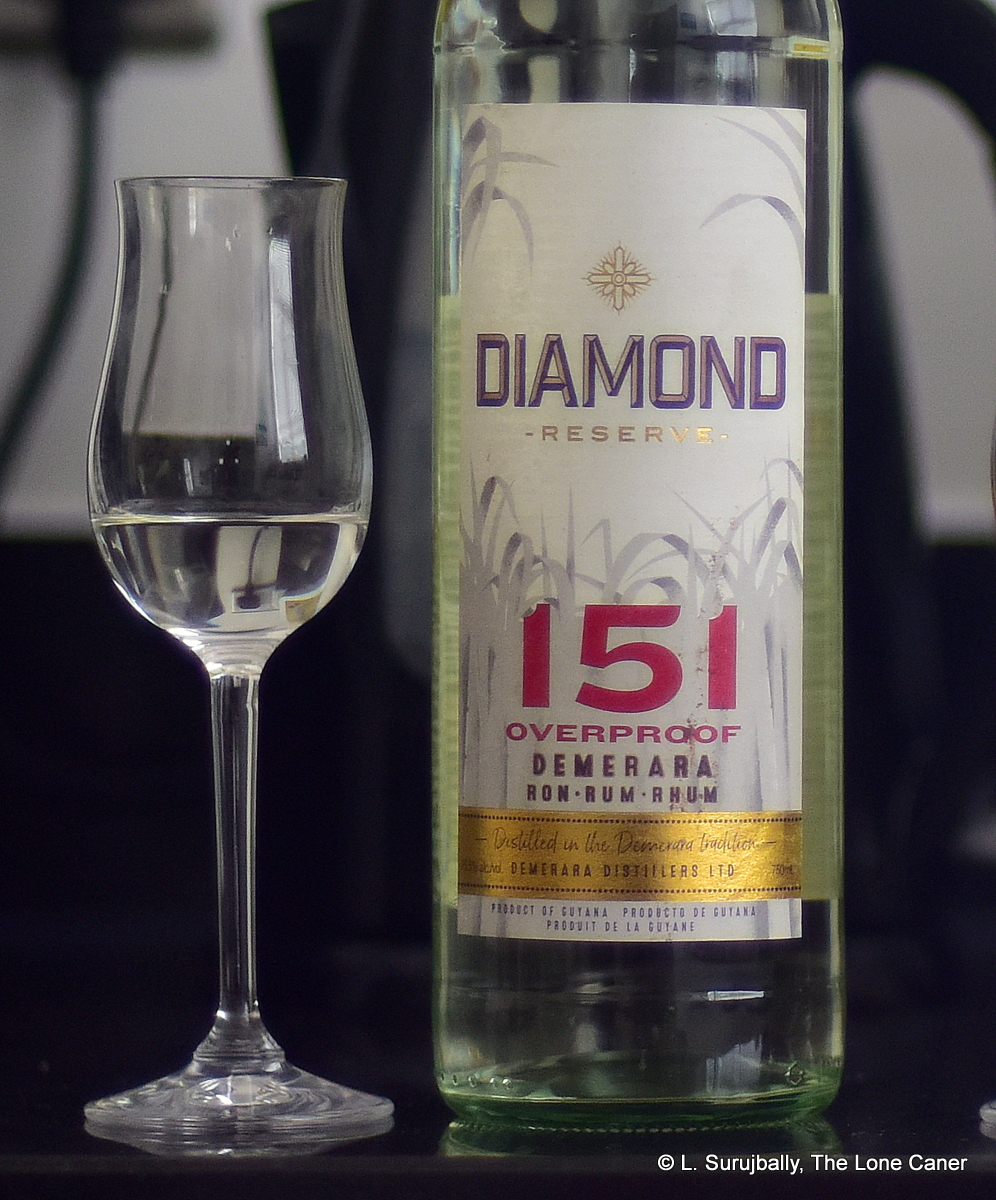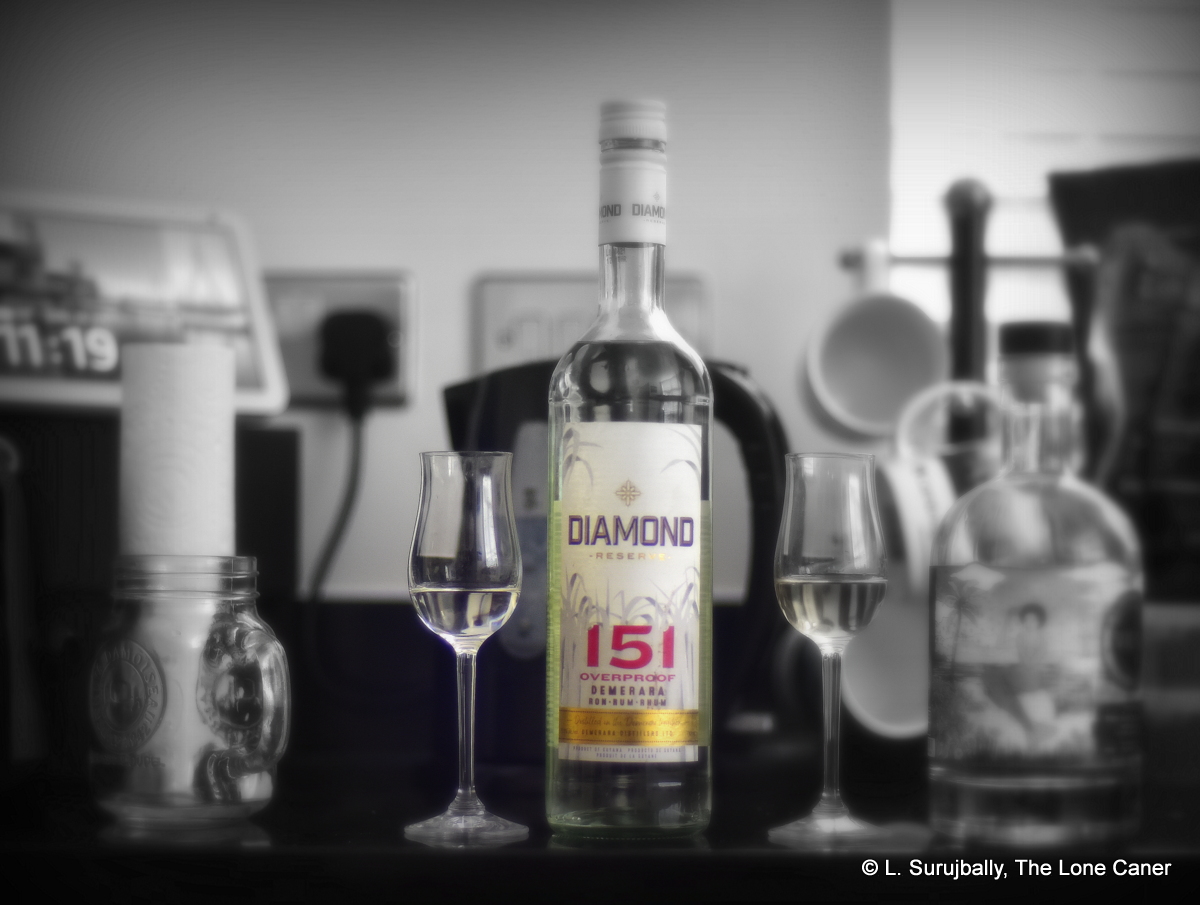Sometimes I get the uneasy impression that slowly the 151s are fading from common collective rumconsciousness. These long-lived, much-used and oft-feared high proof rums – bottled at what was for years almost the standard for really strong rums (75.5%) and outdone only by a few – were once the kings of the stronger drinks mixes (like the B-52 and the Zombie for example), and many cocktails called for them by number, not name or brand. Yet in my lifetime, we have seen more and more strong rums at high proof invading the market, and even some regular blends are inching closer to – if not past – 70% (and if you doubt this, feel free to consult the list of Strongest Rums in the World), so it’s no surprise that it’s been occasionally bruited about that 151s have lost some shine and may be on their way out.
Yet the 151s cheerfully persist and continue to get made, and one of the reasons why is probably the amount of cocktails that call for them (as ingredients or floats), which traditionalists are loath to mess with. Many companies around the world continue to make them, and one of the brands that has stuck with it is Diamond Distillers out of Guyana — the source of many other brands’ stocks for their 151s — which has something of a love-hate relationship with the spirit: sometimes years it’s easy to find and sometimes you’ll search long and hard without success. Fortunately, it always comes back.
The Diamond range of rums from DDL is their entry level blended rum collection: rubbing shoulders with the standard white, gold and dark are three additional variations at 75.5% – the puncheon, the dark overproof and the white overproof. The puncheon and the white seem to be the same product (French savalle still, 6 months’ ageing and filtration to white) and possibly named for differing markets; while the dark is somewhat more interesting, sporting 1-2 years’ age on a blend of Enmore, PM and French savalle distillate.
My own preference for the dark’s intriguing makeup aside, it was the white that I was handed, and that’s what we’re looking at. And indeed, it’s not a bad rum, at first blush. Nosing it reveals a profile nowhere near as “throwaway cheap” as many other brands are wont to make – it starts off with hot notes of alcohol, quickly burning off, leaving clean aromas of nuts, almonds, flowers and strawberries, with vanilla and coconut shavings, and a weird faint background of earth and wet leaves. Nothing too complex, but nothing to throw down the sink either. Like with the Sunset Very Strong, there’s more here than initially seems to be the case.
 This is also evident when (very carefully) tasting it. It has a sharp yet very solid series of simple and quite powerful tastes: cherries, unripe mangoes, light flowers, icing sugar, vanilla and not a whole lot else. Very strong on the attack, of course, but bearable, with a long and epic finish that unfortunately doesn’t present a whole lot but is content to just recap the preceding without adding any flourishes of its own. Like I said – nothing spectacular here, just solid workmanship.
This is also evident when (very carefully) tasting it. It has a sharp yet very solid series of simple and quite powerful tastes: cherries, unripe mangoes, light flowers, icing sugar, vanilla and not a whole lot else. Very strong on the attack, of course, but bearable, with a long and epic finish that unfortunately doesn’t present a whole lot but is content to just recap the preceding without adding any flourishes of its own. Like I said – nothing spectacular here, just solid workmanship.
Since there are several affordable rums we all have access to these days which are more emphatic, individualistic and close to this in strength (the Jamaicans come to mind, no surprise), the question arises whether a 151 with a profile so relatively straightforward serves any real purpose any longer, outside its core cocktail making base (and brainless college students who want to get loaded fast). They are not all that easy to make well at scale, lots of competition is out there, and getting them on board a flight (especially in the US) is a real pain. It’s no surprise they are not as common as they once were, and while they’re not impossible to find, it is becoming difficult to locate them on physical store shelves. Bacardi got out of the game in 2016 entirely (too many lawsuits), yet one can still find DDL, Lamb’s, Goslings, Don Q, Lemon Hart, Cruzan, Tilambic, Takamaka Bay and several others with a little searching (mostly from online shops), and even Habitation Velier paid tribute to the type by issuing one of its own. So not quite ready to be counted out just yet.
Where does this one land, then?
All in all, it’s very much like a full proof entry level rum with some rough edges and too little ageing, which I say from the perspective of one who tastes many cask strength rums on a regular basis and therefore has no particular issue nowadays with the proof point when trying it neat. There are more tastes than one initially expects, which is welcome, and if it is too simple and uncomplicated for serious appreciation, well, at least it leaves its heart out there on the table and doesn’t hold anything back. What you are getting is a very young, uncomplicated, filtered, high proof white rum which can’t class with an equivalent agricole (for how could it?) but which nevertheless gives a good account of itself and seeks only to do what it was made for: to spruce up some dynamite cocktails and to give you a seriously good drunk, seriously fast, and maybe both at the same time. Fine by me.
(#1012)(76/100)
Other notes
- For those with a historical bent, there’s a small history of the 151s available to provide more backstory and detail than this review would allow for.
- This rum intrigued me enough that I’m scouting out the Dark Overproof now.
- My sincere appreciation to Indy Anand of Skylark and Ben Booth of Tamosi, in whose pleasant, ribald and laughter-filled company I sampled this one (it came from Indy’s stocks, which meant it was fair game for all of us).
- It’s interesting how things change: back in 2010 when I wrote the humorous Bacardi 151 review, 75.5% was a breathtaking and titanic proof point, and a rum issued like that was regarded with near awe, sipped with trembling care. Nowadays a rum sporting such an ABV is regarded with caution, yes, but it would not be considered strange, or even particularly unusual.
